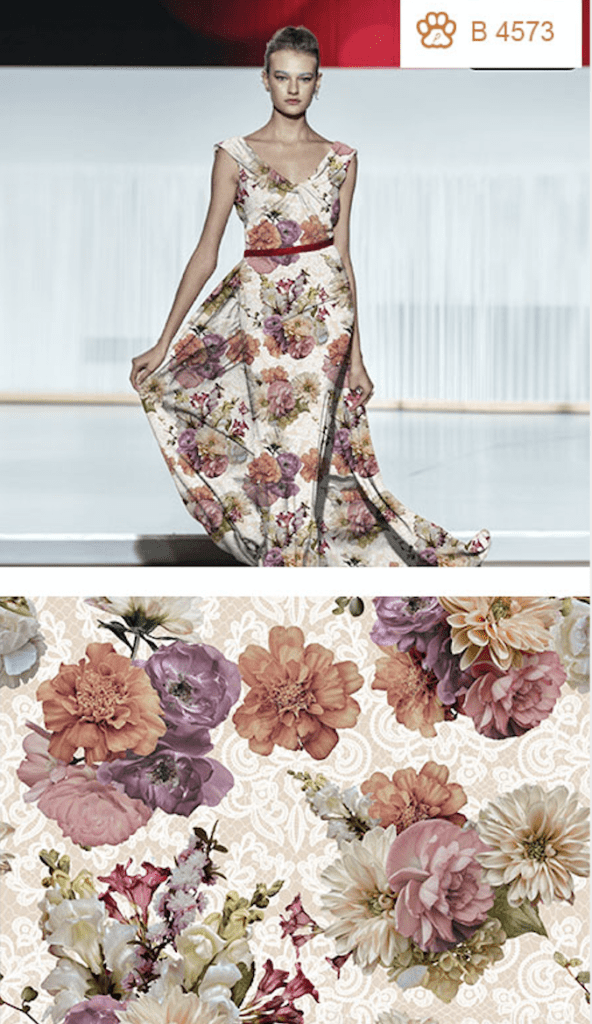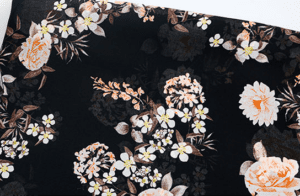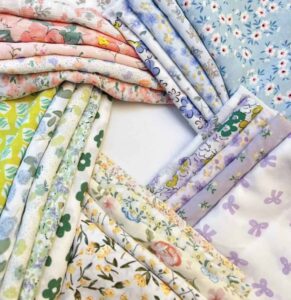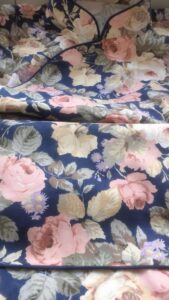With the rapid development of the national economy, people’s aesthetic awareness is increasing. Digital printing technology has become an important technical tool in garment design, enriching the content of garment design to the greatest extent possible and meeting the needs of consumers for aesthetic and personalised garments. Modern clothing designers need to effectively apply digital printing technology to garment design to better meet the diverse aesthetic needs of people.
Introduction to Digital Printing Technology
Digital printing is the use of digital computer technology to print the desired pattern. In garment design, the designer must use digital means to modify the pattern using computer software and spray the dye onto the garment fabric to obtain a highly accurate pattern.
Digital printing technology is a high technology that integrates computer-aided design and precision machining technology with the development of computer technology, and the emergence of digital printing technology has introduced a whole new concept for the textile printing and dyeing industry. China is the world’s largest exporter of textiles and clothing. The textile printing and dyeing industry has serious pollution problems and is difficult to treat. Reducing pollution in the textile printing and dyeing industry is a major issue for the optimisation of the national industrial structure. With the maturity of digital printing technology, its green function brings new development opportunities for the prevention and control of the printing and dyeing industry, effectively solving the problems of traditional printing enterprises such as cumbersome processes and serious pollution.
By using digital printing technology to design and produce garments, designers are able to match patterns with market demand, thus meeting consumer demand for trendy and personalised clothing products.
Digital printing is the digitisation of printing, and digital printing technology can be used to ensure that garment companies create maximum economic benefits. The application of digital printing technology in garment design has the advantage of being highly accurate, meeting the individual needs of the consumer and meeting the concept of environmental protection.
Digital printing technology breaks down the drawbacks of traditional printing techniques and prevents inaccurate colour registration due to human error. Digital technology can be applied to a wide range of fabrics, optimising the traditional printing process and improving efficiency.
The designer can make reasonable changes to the colour pattern of the garment design on the garment printing design machine, and the garment consumer can provide the garment manufacturer with information on the colour of the garment pattern required according to their needs.
The use of digital printing technology in garment design, where the colour of the pattern is sprayed onto the garment in a way that cannot be easily replicated by other manufacturers, effectively solves the problem of storing data from traditional printing techniques, thus ensuring that the garment company’s own innovative design features. The use of digital printing technology is also a way of avoiding the waste of dyestuff in traditional printing designs, as the dye is sprayed onto the textile, preventing it from being discharged into the water. The application of digital printing technology is in line with the concept of green ecology and environmental protection.
The application of digital printing patterns in garment design
The choice of colour is an important element of digital print design and is directly related to the overall mood of the garment. Digital printing technology has the advantage of natural colour transitions to ensure that garment patterns are more vivid. When using digital printing technology, it is important to highlight the colour advantages of digital printing technology, to analyse the aesthetic needs of the market, to combine the seasonal colour elements of the clothing market and the user’s clothing design needs, and to reasonably select clothing printing colours. Consider the colour performance of the garment fabric base colour on the dyed spray print pattern.
The use of patterns in garment design can have an accent effect and convey the designer’s artistic style. Modern garment designers need to make the most of the advantages of digital printing technology and integrate patterns with garment design through the use of precise positioning. The integration of pattern and garment design can be achieved through the conversion of computer-generated floral patterns and the decomposition of printed patterns into garment designs. The design of the garment is drawn up using computer software and the structure is printed out.
In the design of a collection, the digital print can be optimised according to its position and area in the innovative design of the garment by using different transformation methods, so that the pattern can fully express the creative mood of the garment designer. Depending on the size and position of the pattern, the print can be incorporated into the design of the garment, thus highlighting the artistic style of the collection.
When printing directly on the computer, it is important to use fabrics with a clean surface, as long as it is clear that the texture of the fabric matches the style of the garment. Once the design has been completed, the relevant garment pieces are obtained and then digitally printed to produce the garment. The designer should be able to improve the quality of the garment design according to the style requirements of the garment. Reasonable secondary processing methods are used to process the fabric and enrich the visual hierarchy of the garment print design. In designing garment digital prints, the texture of the design is transformed into a pattern. By transforming the printed fabric, this creates an optical illusion of the fabric and enhances the effect of the garment design. If the print is transformed into a pattern, attention must be paid to the combination of dots, lines and surfaces and the matching of patterns and colours . Designers can modify printed fabrics according to their own artistic style to meet the diverse aesthetic needs of the market.

Concluding remarks
In order to work with innovative ideas in modern clothing design, the advantages of digital printing technology must be fully exploited to print various designs on fabric in high definition and to convey different design ideas to people. The digital inkjet printing of textile fabrics offers a new form of artistic creation for fabric pattern designers. This paper examines the use of digital printing in garment design in conjunction with inkjet printing technology. The application of inkjet printing technology to textile fabric pattern printing broadens the design re-invention and the visual impact of the pattern, enriches the design creation form, makes the production form flexible and the application method personalised, and greatly meets people’s personalised consumer needs.
























